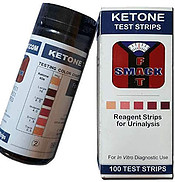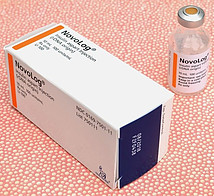When you have a diabetic in the family understanding what is Ketosis and Ketoacidosis is very important.
While the names may sound similar they are very different.
Ketosis is often the intended result of a low-carb diet and is quite popular as a means of accelerated weight loss.
On the other hand, Ketoacidosis is a serious, life-threatening complication of Type 1 diabetes.
Since our grandson was diagnosed with Type 1 diabetes almost a year ago we needed to understand the difference.
We also needed to know what to do if ketoacidosis ever occurred when he was in our care.
When a child has diabetes it is up to the adults in his life to know what to do to keep him safe and as healthy as possible and a big part of that knowing what complications to watch out for.
Confidently knowing what to do when you suspect diabetic ketoacidosis can mean the difference in a positive outcome or not.
We certainly wouldn’t want to make the situation worse by doing the wrong thing so it is very important to be informed.
Let’s just get right into it, shall we?
What is Ketosis
A significant number of people have chosen to follow what is called the Ketogenic(Keto) Diet.
This diet severely restricts carbohydrate intake causing the body to shift from burning glucose to burning fat for fuel. This causes a rise in the level of ketones in the blood.
Those who follow the Keto Diet are seeking extended periods in ketosis as part of a weight-loss plan.
Some people can enter a state of ketosis through fasting.
As a general rule, Dietary Ketosis does not pose health threats unless you don’t eat a variety of fruits, vegetables, proteins, and healthy fats. If you are not eating enough foods to gain the nutrients your body needs, malnutrition can occur. Although rare it is possible.
Symptoms of Ketosis
Ketosis may cause bad breath. As ketones are broken down for a fuel source a byproduct that can be excreted in the urine and breath is acetone. This may make the breath smell fruity but unpleasantly.
Ketosis may also cause headaches, thirst and some people experience stomach complaints.
While ketosis is generally safe there are times it can lead to nutritional imbalances in some people.
Watch for these signs of malnutrition:
- fatigue
- weakness
- memory problems or poor concentration
- mood swings
- feeling cold
- more frequent illness
Ketosis generally poses no health threats and is a result of either fasting or following the Ketogenic Diet. Any unwanted effects can easily be reversed simply by going off the diet and increasing carbohydrate consumption.
What is Ketoacidosis
Ketoacidosis (DKA) is a serious, life-threatening complication of Type 1 diabetes. Missing insulin doses or not taking enough insulin can cause ketoacidosis.
Ketoacidosis occurs when blood sugar is not being metabolized properly because of a lack of insulin and the body is dehydrated. This causes the normally small concentration of ketones in the bloodstream to be increased,
The ketones are being excreted in the urine but not fast enough to prevent the blood from becoming acidic.
It is this increase in the blood’s acidity that can cause significant organ damage.
If left untreated ketoacidosis can be life-threatening and requires immediate medical treatment.
While DKA most often occurs in Type 1 diabetics, it can happen to type 2 diabetics who are no longer producing insulin themselves.
Illnesses such as pneumonia and urinary tract infections can cause the body to produce increased levels of hormones like adrenaline or cortisol which can also trigger DKA.
Other possible triggers may include:
- physical or emotional trauma
- stress
- heart attack
- alcohol or drug abuse
- medications such as corticosteroids and diuretics
- dehydration
- acute major illnesses like sepsis, pancreatitis, and myocardial infarction
Immediate medical treatment should be sought as soon as Ketoacidosis(DKA) is suspected.
Symptoms of Ketoacidosis(DKA)
The symptoms of ketoacidosis often include:
- high blood glucose levels
- rising levels of ketones in the urine
- increased thirst and more frequent urination
- exhaustion
- dry or flushed skin
As DKA progresses, symptoms can also include:
- nausea and vomiting
- stomach pain
- trouble breathing
- a fruity odour in the breath
- confusion and difficulty paying attention
- loss of consciousness
Prevention and Treatment
Diabetics whether type 1 or type 2, can reduce their risk of developing ketoacidosis (DKA) by :
 regularly monitoring blood glucose and contacting your doctor if blood sugars are out of control
regularly monitoring blood glucose and contacting your doctor if blood sugars are out of control- if blood glucose remains high, test urine for ketones
- avoid exercise if ketones are present in the urine and blood glucose is high
- take insulin according to your doctor’s instructions
- eat a balanced healthy diet
- don’t skip meals
Treatment of DKA is often in hospital and the patient is greatly improved within 48 hours.
After treatment, it is important to go over your treatment plan with your Diabetes Care Team and they will make any necessary adjustments to try to avoid future DKA events from occurring.
It is imperative to follow your diabetes management plan.
Final Thoughts
What are Ketosis and Ketoacidosis is something that really needs clarification?
Because the names are so similar they can easily be confused but in reality, they are very different.
As this article explains Ketosis is a planned, desired result of a severely low carbohydrate diet where accelerated weight loss is desired.
While there are no serious medical effects of ketosis there can be some unpleasant side effects that can be eliminated by simply resuming the consumption of carbs.
On the other hand, ketoacidosis (DKA) is a life-threatening complication of Type 1 diabetes and requires immediate medical intervention.
Keep a daily log to record medications, meals, snacks, blood sugar, and ketones.
Ketoacidosis can often be prevented by frequent monitoring of blood glucose levels, eating a well-balanced, healthy diet, and taking insulin as directed by your health care team.
If blood glucose levels are remaining high, test for ketones.
If ketones are present contact your doctor.
With proper diabetes management, DKA can often be avoided but sometimes for unknown reasons it just happens.
That is why it is necessary to understand what to do and to ensure those around you know how to help you should a serious DKA event ever occur.
I am not in any way a medical practitioner, please do not rely on the information on our website as an alternative to medical advice from your doctor or another healthcare provider. We only share our experiences.
Feel free to share your experiences with Ketosis or Ketoacidosis in the comment section below. I will respond and answer any questions.



Great explanation, Deb and Rick. I only recently found out about ketosis and it took me a while to understand it. And now a new term comes along, ketoacidosis.
One of my staff in the old days had diabetes and he vaguely had warned me what his symptoms could be. I am happy that something which was probably ketoacidosis only occured once and just mildly, because I really didn’t know what to do. I just thought he was acting funny, until he told me what to do. Phew.
Really good of you you want to know everything there is to know in order to help your grandson in the best way!
Take care.
Thanks for commenting Hannie. Witnessing someone with even mild ketoacidosis can be scary if you understand what is happening and don’t know how to help them in a medical emergency. With our grandson I have witnessed many ‘highs’ and ‘lows’. Both are treatable and fortunately we have been able to avoid a full ketoacidosis event. However in spite of our best efforts diabetes does not always react the way you think it will and for that reason knowing how to help a diabetic is important. I am glad your employee was still able to tell you what to do and that you were there to do it. Take care and stay safe.